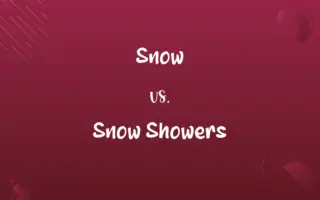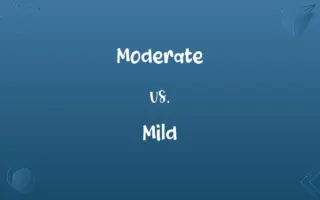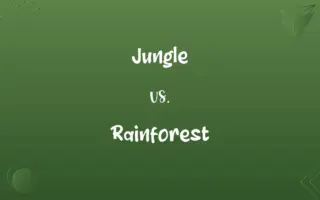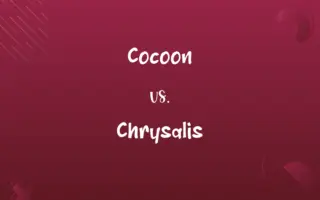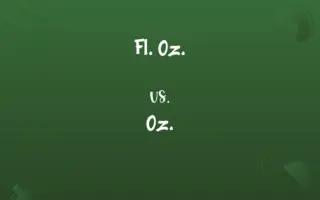Frost vs. Snow: Know the Difference

By Hifza Nasir & Shumaila Saeed || Published on November 4, 2024
Frost forms from water vapor turning solid on surfaces near the ground when temperatures drop, while snow forms in clouds and falls as precipitation. Frost decorates surfaces, snow accumulates.

Key Differences
Frost occurs when water vapor in the air directly solidifies on cold surfaces, creating a layer of tiny ice crystals. This process requires a combination of cold temperatures and moisture. Snow, on the other hand, forms when water vapor in clouds freezes into ice crystals, which then stick together and fall to the ground when heavy enough. The formation of frost is a surface phenomenon, whereas snow is a form of precipitation.
Shumaila Saeed
Nov 04, 2024
Frost typically appears on clear, cold nights, indicating that the temperature of the surface has dropped below the freezing point of water. It often forms on grass, windowpanes, and roofs, signifying the absence of cloud cover which allows the ground to lose heat rapidly. Snow requires cloud cover and specific atmospheric conditions to form, including moisture and temperatures low enough to sustain ice crystals from cloud to ground.
Hifza Nasir
Nov 04, 2024
The appearance and impact of frost and snow are distinct; frost creates a thin layer of ice that coats surfaces, often seen as white crystals resembling a dusting of sugar. Snow accumulates in layers that can cover the landscape, affecting travel and landscape visibility. While frost may cause slipperiness on surfaces, snow accumulation poses challenges for mobility, infrastructure, and can significantly alter the physical environment.
Hifza Nasir
Nov 04, 2024
In terms of environmental impact, frost can damage sensitive plants by freezing the water inside plant cells, leading to cell wall rupture. Snow provides insulation to the ground and plants, protecting them from extreme cold. The insulating effect of snow helps to moderate the temperature of the soil beneath, which can be beneficial for overwintering plants and animals.
Hifza Nasir
Nov 04, 2024
Both frost and snow are dependent on temperature, but their formation and effects are influenced by different atmospheric conditions. Frost forms under clear skies and calm winds which facilitate the cooling of surface temperatures below freezing. Snow formation requires a saturated air mass where ice crystals can form, grow, and fall, often accompanied by colder temperatures and varying wind conditions.
Shumaila Saeed
Nov 04, 2024
ADVERTISEMENT
Comparison Chart
Formation
Direct solidification of water vapor on cold surfaces
Freezing of water vapor in clouds, falling as ice crystals
Shumaila Saeed
Nov 04, 2024
Conditions Required
Clear skies, cold temperatures, surface below freezing
Cloud cover, saturated air, temperatures low enough to sustain ice crystals
Hifza Nasir
Nov 04, 2024
Appearance
Thin layer of ice crystals on surfaces
Flakes accumulate, covering surfaces in layers
Hifza Nasir
Nov 04, 2024
Impact
Can cause slipperiness, damages sensitive plants
Affects travel, infrastructure, provides ground insulation
Dua Fatima
Nov 04, 2024
Environmental Effect
Damages plant cells by freezing internal water
Insulates soil and plants, moderates soil temperature
Shumaila Saeed
Nov 04, 2024
ADVERTISEMENT
Frost and Snow Definitions
Frost
Visible on clear, cold nights as a white crystalline layer.
The car's windshield was coated with a thick layer of frost.
Hifza Nasir
Mar 05, 2024
Snow
Impacts infrastructure and mobility.
The city deployed snowplows to clear the streets after the snowstorm.
Shumaila Saeed
Mar 05, 2024
Frost
Indicates temperatures have dropped below the freezing point.
The presence of frost confirmed the overnight drop in temperature.
Hifza Nasir
Mar 05, 2024
Snow
Snow is precipitation of ice crystals that forms in clouds.
Snow began to fall, blanketing the town in white.
Hifza Nasir
Mar 05, 2024
Frost
Requires moisture and cold surface temperatures to form.
The combination of damp air and cold metal produced frost on the bridge.
Shumaila Saeed
Mar 05, 2024
ADVERTISEMENT
Snow
Provides insulation for the ground and plants.
The thick layer of snow protected the dormant plants from the cold.
Dua Fatima
Mar 05, 2024
Frost
Frost forms when water vapor solidifies on surfaces below freezing.
Frost covered the grass, making it sparkle in the morning light.
Shumaila Saeed
Mar 05, 2024
Snow
Accumulates in layers, affecting travel and landscape.
The heavy snow made the roads impassable.
Hifza Nasir
Mar 05, 2024
Frost
Can damage plants by freezing internal water.
The sudden frost damaged early blooms in the garden.
Hifza Nasir
Mar 05, 2024
Snow
Requires specific atmospheric conditions to form and fall.
The cold, moist air was perfect for snow formation.
Hifza Nasir
Mar 05, 2024
Frost
A deposit of minute ice crystals formed when water vapor condenses at a temperature below freezing.
Hifza Nasir
Mar 05, 2024
Snow
Frozen precipitation consisting of hexagonally symmetrical ice crystals that form soft, white flakes.
Hifza Nasir
Mar 05, 2024
Frost
To cover (glass, for example) with a roughened or speckled decorative surface.
Hifza Nasir
Mar 05, 2024
Snow
Watery particles congealed into white or transparent crystals or flakes in the air, and falling to the earth, exhibiting a great variety of very beautiful and perfect forms.
Hifza Nasir
Mar 05, 2024
Frost
A cover of minute ice crystals on objects that are exposed to the air. Frost is formed by the same process as dew, except that the temperature of the frosted object is below freezing.
Dua Fatima
Mar 05, 2024
Snow
To fall in or as snow; - chiefly used impersonally; as, it snows; it snowed yesterday.
Shumaila Saeed
Mar 05, 2024
Frost
The act of freezing; - applied chiefly to the congelation of water; congelation of fluids.
Hifza Nasir
Mar 05, 2024
Frost
The state or temperature of the air which occasions congelation, or the freezing of water; severe cold or freezing weather.
The third bay comes a frost, a killing frost.
Shumaila Saeed
Mar 05, 2024
Snow
A layer of snowflakes (white crystals of frozen water) covering the ground
Hifza Nasir
Mar 05, 2024
Frost
Frozen dew; - called also hoarfrost or white frost.
He scattereth the hoarfrost like ashes.
Hifza Nasir
Mar 05, 2024
Frost
Coldness or insensibility; severity or rigidity of character.
It was of those moments of intense feeling when the frost of the Scottish people melts like a snow wreath.
The brig and the ice round her are covered by a strange blackobscurity: it is the frost smoke of arctic winters.
Hifza Nasir
Mar 05, 2024
Frost
To cover with hoarfrost; to produce a surface resembling frost upon, as upon cake, metals, or glass; as, glass may be frosted by exposure to hydrofluoric acid.
While with a hoary light she frosts the ground.
Dua Fatima
Mar 05, 2024
Repeatedly Asked Queries
Can frost and snow occur at the same time?
While they require different conditions, frosty mornings can follow snowfall if conditions become clear and temperatures drop further.
Hifza Nasir
Nov 04, 2024
What weather conditions are needed for frost?
Frost requires clear skies, calm winds, and temperatures below freezing.
Shumaila Saeed
Nov 04, 2024
What conditions are necessary for snow to fall?
Snow requires saturated air, cloud cover, and cold temperatures throughout the atmosphere.
Shumaila Saeed
Nov 04, 2024
Can frost form on snow?
Yes, frost can form on snow under the right conditions, adding to the snow's insulating properties.
Hifza Nasir
Nov 04, 2024
How does snow benefit the environment?
Snow insulates the ground, protecting plants and animals from extreme cold.
Hifza Nasir
Nov 04, 2024
What happens to snow after it falls?
Snow can compact into ice, melt, or sublimate, depending on temperatures and conditions.
Hifza Nasir
Nov 04, 2024
How do communities prepare for heavy snowfall?
Communities prepare by issuing warnings, pre-treating roads, and having snow removal equipment ready.
Shumaila Saeed
Nov 04, 2024
How do frost and snow differ in formation?
Frost forms directly on cold surfaces from water vapor, while snow forms in clouds and falls as precipitation.
Shumaila Saeed
Nov 04, 2024
Why does frost damage plants?
Frost damages plants by freezing the water inside their cells, causing cell walls to rupture.
Hifza Nasir
Nov 04, 2024
How does snow affect daily life?
Snow affects transportation, can lead to school and business closures, and requires significant effort for removal.
Shumaila Saeed
Nov 04, 2024
Why is snow white?
Snow is white because its complex structure scatters and reflects visible light.
Hifza Nasir
Nov 04, 2024
How can the impact of frost be minimized?
Covering plants and providing insulation can protect against frost damage.
Hifza Nasir
Nov 04, 2024
Does frost only form outdoors?
Frost can form on any cold surface exposed to moist air, including indoors on windows.
Shumaila Saeed
Nov 04, 2024
Is frost considered precipitation?
No, frost is not precipitation; it's the direct solidification of water vapor on surfaces.
Shumaila Saeed
Nov 04, 2024
What makes snowflakes unique?
Snowflakes form in unique shapes due to varying atmospheric conditions during their formation.
Shumaila Saeed
Nov 04, 2024
Share this page
Link for your blog / website
HTML
Link to share via messenger
About Author
Written by
Hifza NasirCo-written by
Shumaila SaeedShumaila Saeed, an expert content creator with 6 years of experience, specializes in distilling complex topics into easily digestible comparisons, shining a light on the nuances that both inform and educate readers with clarity and accuracy.










